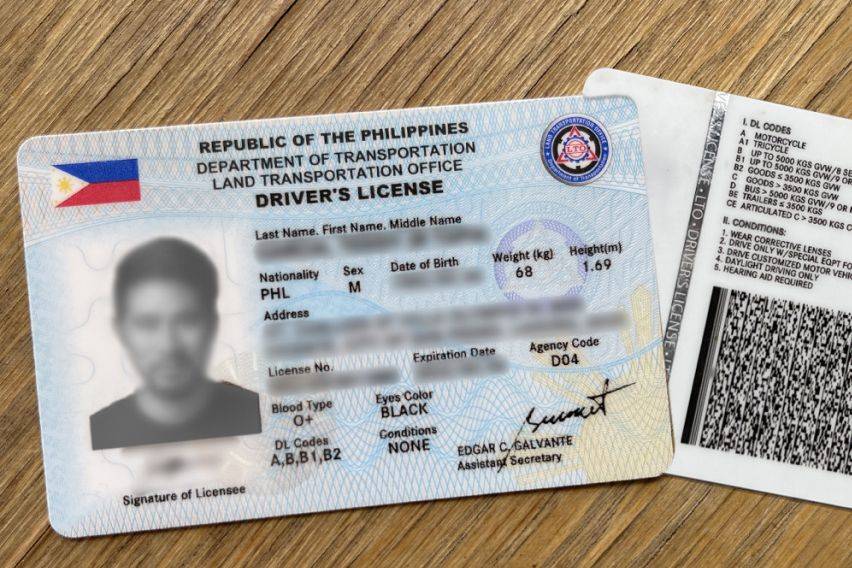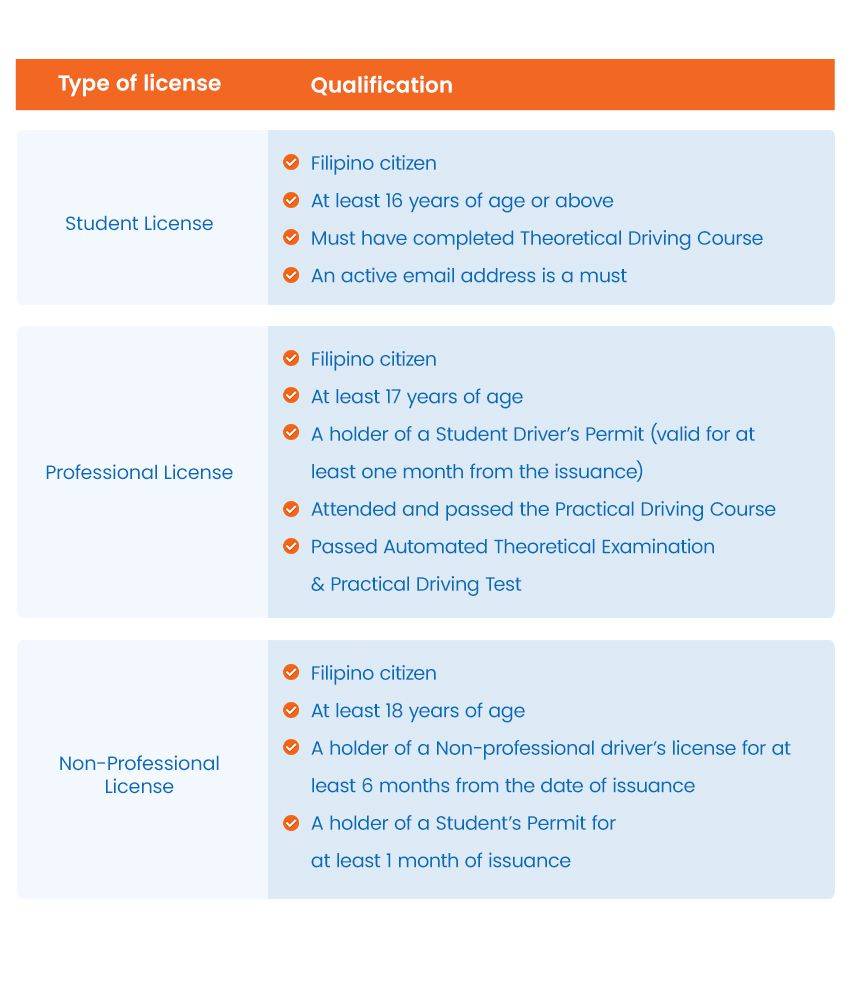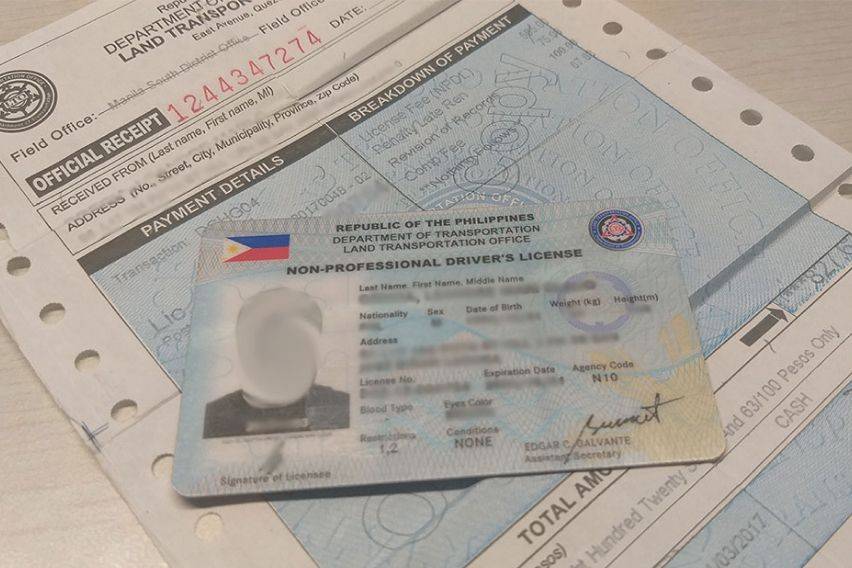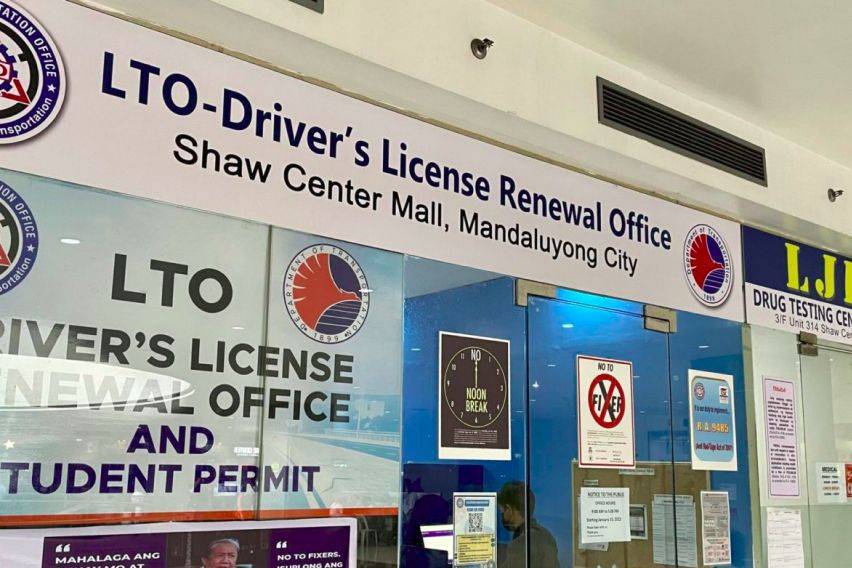Navigating the Philippine driver’s license application process

- KEY TAKEAWAYS
- Significance of a driver license in the Philippines
- Types of driver license in the Philippines
- Benefits of owning a driver’s license in the Philippines
- Qualification needed to acquire a driver’s license
- Documents required for acquiring a driver’s license in the Philippines
- Driver’s License application process in the Philippines
The Land Transportation Office (LTO), in recent years, has made several modifications to the driver’s license front. For instance, changes have been made in the application process, rules, fees, and validity front of the license. Also, these revisions are significant enough to confuse anyone trying to make sense of the driver’s license application process in the Philippines.
KEY TAKEAWAYS
How can I know my license type?
Simple, Just check the back of your LTO driver's license.Is there a validity period for the driving license?
Yes, however, the period varies depending on the license type.How do I check my license expiry day?
You can check the expiration date of the license on the card itself, it is mentioned on the front side.Can I still drive if I don't have a 20/20 vision?
Yes, you can drive a motor vehicle in the Philippines without a 20/20 vision.But worry not—we are here to help you through the LTO’s driver’s license application process with ease. Here, you will find a complete step-by-step guide to the process, along with details regarding the requirements, fees, and other important information.
Also Read: Want to buy a car? Here's a complete list of all associated costs
So, without further ado, let us begin understanding the driver's license application process in the Philippines.
Significance of a driver license in the Philippines
In the Philippines, the driving license is a government-issued document that certifies that the individual holding it can legally drive a motor vehicle (like a motorcycle, car, bus, etc). It further states that the holder has completed all the requirements by the Department of Transportation (DOTr).
Overall, a driver's license is a must if one wants to drive freely along the Philippine roads. It also functions as a valid identification tool, proving that an individual is who he/she claims to be.
Types of driver license in the Philippines
The driver’s licenses issued by LTO are segregated into different categories or classifications, each offering a different level of driving permission to the holder. Several factors influence the type of license an individual can process. For instance, the LTO takes into account the application's age, type of vehicle, competence, driving experience, and whether they are driving for a living or not. Furthermore, a driving license specifies where it is legal to drive a motor vehicle.
While the license application process remains the same for different types of licenses, each has a separate evaluation process, fees, requirements, and driving test.
Coming to the different types of driving licenses, LTO currently issues three -
- Student Permit
- Non-Professional Driver’s License
- Professional Driver’s License
While we’ll discuss each of these in detail in a separate article, here is a glimpse of what each offers.
Student Permit
Every driver in the Philippines has to go through a ‘student’ phase wherein they need to acquire a student's permit to be able to operate the vehicle in public. However, the driving must be done under the supervision of a professional or non-professional driving license holder.
Non-professional driver’s license
Once the driver has survived on a student permit for at least 6 months, the next step is to secure a Non-Professional Driver’s License. For many, it is their first government-issued ID card. So, this one is basically for rookie drivers who are fresh out of the student phase with no experience in driving without assistance and no intention to drive a public vehicle.
Professional driver’s license
If you want to pursue your career as a public utility vehicle driver or a commercial driver in the Philippines, then you need to secure a professional driver license.
Apart from these three driving licenses, there is an International Driver’s License/Permit as well that is issued to the permanent residents of the Philippines. It allows the driver to drive a motor vehicle freely in over 150 other countries, except for Spain and Australia. Also, unlike the other licenses, this one is issued by the Automobile Association Philippines.

Driving License validity in the Philippines
The validity of a driver's license depends on the type, the table below explains the matter in detail.

Benefits of owning a driver’s license in the Philippines
Having a driver’s license not only allows an individual to drive a motor vehicle on the roads legally but also brings along several other benefits -
Identity Verification: A driving license in the Philippines acts as a valid ID for both government-related and private transactions.
Mobility Freedom: The license allows the holder to travel and transport across the county freely. In the case of an international driver’s License/Permit, the holder can even drive the motor vehicle freely in over 150 other countries.
Protection: All the potential penalties and legal repercussions associated with driving a motor vehicle without a license or with an expired license can be avoided.
Ensures good health: Every license holder needs to go for Periodic Medical Examination, which helps them keep a watch on their health.
Qualification needed to acquire a driver’s license
Apart from clearing the driving assessments, a licensee is also required to meet the below-mentioned criteria -
- Must be well-dressed
- Must be mentally and physically fit
- Must be neat, clean, & presentable
- Must have no unsettled traffic violation
- Must be able to read & write English, Filipino, or any local dialect
- Must clear the written exam
Now, there are some specific qualifications needed by LTO depending on the license type.

Note, that foreign applicants have a different set of qualifications, which will be discussed separately.
Documents required for acquiring a driver’s license in the Philippines

Let’s now check out what documents are needed to acquire a driving license in the Philippines.
Student License Requirements
For applicants above the age of 18 years
- Duly accomplished Application for Permits and License Form
- Electronically transmitted medical certificate (original & 1 photocopy)
Any one of the following documents - - PSA/NSO certificate of birth (original & 1 photocopy)
- Passport (original & 1 photocopy)
- Philippine Identification Card (original & 1 photocopy)
- PSA certificate of marriage (original & 1 photocopy)
- Local civil registry (original & 1 photocopy)
- For applicants below the age of 18 years: Consent from one parent or a person having custody/care/supervision over the minor applicant with the presentation of any valid government ID (original and photocopy) with photo and signature of the parent/affiant
- Original and one photocopy of any of the following valid IDs along with the applicant’s photo and signature - Philippine Identification Card, Social Security System Card, Philippine passport, TIN card, PhilHealth ID, UMID card, Voter’s ID, Postal ID, Senior Citizen, OFW ID, Professional Regulation Commission, Barangay ID, etc (check out the complete list here)
- If employed, the Taxpayer’s Identification Number
- Certificate of Completion of the 15-hour Theoretical Driving Course
Non-Professional Driver’s License Requirement
- Application for Permits and License Form (duly accomplished)
- Electronically transmitted medical certificate (original & 1 photocopy)
- Practical Driving Course completion certificate (original & 1 photocopy)
- Valid Student-Driver’s Permit
- For applicants who are 17 years old: Parent or guardian’s consent with valid government ID, photo, signature
- Original and one photocopy of any of the following valid IDs along with the applicant’s photo and signature, PhillD Card, Philippine passport, Social Security System Card, Philippine passport, TIN card, PhilHealth ID, UMID card, Voter’s ID, Postal ID, Senior Citizen, OFW ID, Professional Regulation Commission, Barangay ID, etc (check out the complete list here)
- If employed, the Taxpayer’s Identification Number
- Negative drug test result from the Department of Health (can be an accredited center and/or government hospital)
Professional License
- Permits and License Form (duly accomplished)
- LTO-accredited medical certificate (original and one photocopy)
- PDC (original and one photocopy)
- PSA birth certificate (original and one photocopy)
- LTO Client ID
- If employed, Taxpayer’s Identification Number
- Negative drug test result from the Department of Health (can be an accredited center and/or government hospital)
- Valid Police Clearance or NBI Clearance
- Student Permit or Non-Professional Driver’s License (original)
Driver’s License application process in the Philippines

Once you are sorted with all the requirements and the qualifications are under check, it is now time to proceed with the application procedure. As expected, the procedure for procuring a driver's license is distinct for all three license types. So, let’s discuss each one by one -
Student License application procedure -
| Step 1: Visit the closest LTO branch Step 2: Request the Application for Permits and License form and make sure it is duly accomplished Step 3: Secure a queue number and wait for your turn Step 4: Once your number is called, submit the duly filled APL and other requirements along with the queue number Step 5: Read the Driver’s Road Safety Pledge Step 6: Wait for your queue number to be called for signature and photo Step 7: Pay fees at the cashier counter Step 8: Wait for the release of the Official Receipt and the Student Permit Step 9: Claim your Student Permit, and before moving out, fill in the log sheet |
Non-Professional Driver’s License Application Procedure -
| Step 1: Visit the closest LTO branch Step 2: Request the Application for Permits and License form and make sure it is duly accomplished Step 3: Secure a queue number and wait for your turn Step 4: Once your number is called, submit the duly filled APL and other requirements along with the queue number Step 5: Post the approval of the submitted documents, move to the cashier and pay the fees Step 6: Time to take the written exam (if failed, come back the following day to retake the exam/if passed, proceed to the driving test) Step 7: Take the driving test (if failed, sadly it is the end of the transaction/if passed, check the following steps) Step 8: Move to the cashier’s counter Step 9: Proceed to the biometric/encoding counter Step 10: Collect OR and the DL Card Step 11: Claim your Student Permit, and before moving out, fill in the log sheet |
Professional License
| Step 1: Visit the closest LTO branch Step 2: Request the Application for Permits and License form and make sure it is duly accomplished Step 3: Secure a queue number and wait for your turn Step 4: Once your number is called, submit the duly filled APL and other requirements along with the queue number Step 5: Post the approval of the submitted documents, move to the cashier and pay the fees Step 6: Time to take the written & practical exam (if failed, sadly it is the end of the transaction/if passed check the following steps) Step 8: Move to the cashier’s counter Step 9: Proceed to the biometric/encoding counter Step 10: Collect OR and the DL Card Step 11: Claim your Student Permit, and before moving out, fill in the log sheet |
Note that all this can also be done online via the LTMS Portal, which will be discussed in the follow-up blog. So, stay tuned.
Summing up
Obtaining a driver’s license is not difficult. All you need to do is qualify for all the criteria and ensure all the required documents are in order.
Also Read: Check out all the violations, penalties, and fines a driver may face in the Philippines
Featured Articles
- Latest
- Popular
Recommended Articles For You
Featured Cars
- Latest
- Upcoming
- Popular
Car Articles From Zigwheels
- News
- Article Feature
- Advisory Stories
- Road Test
